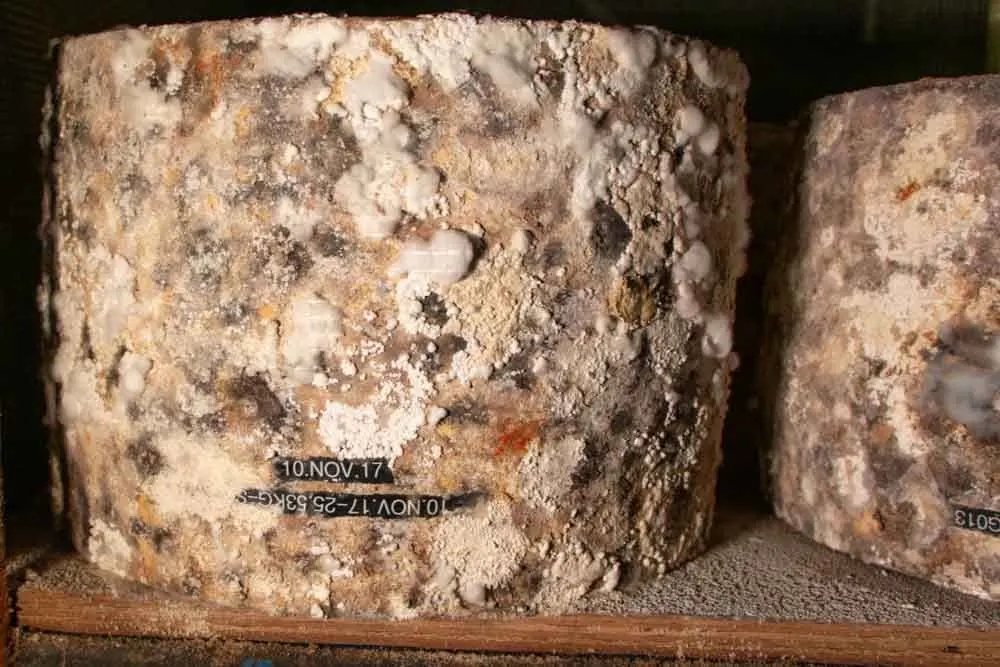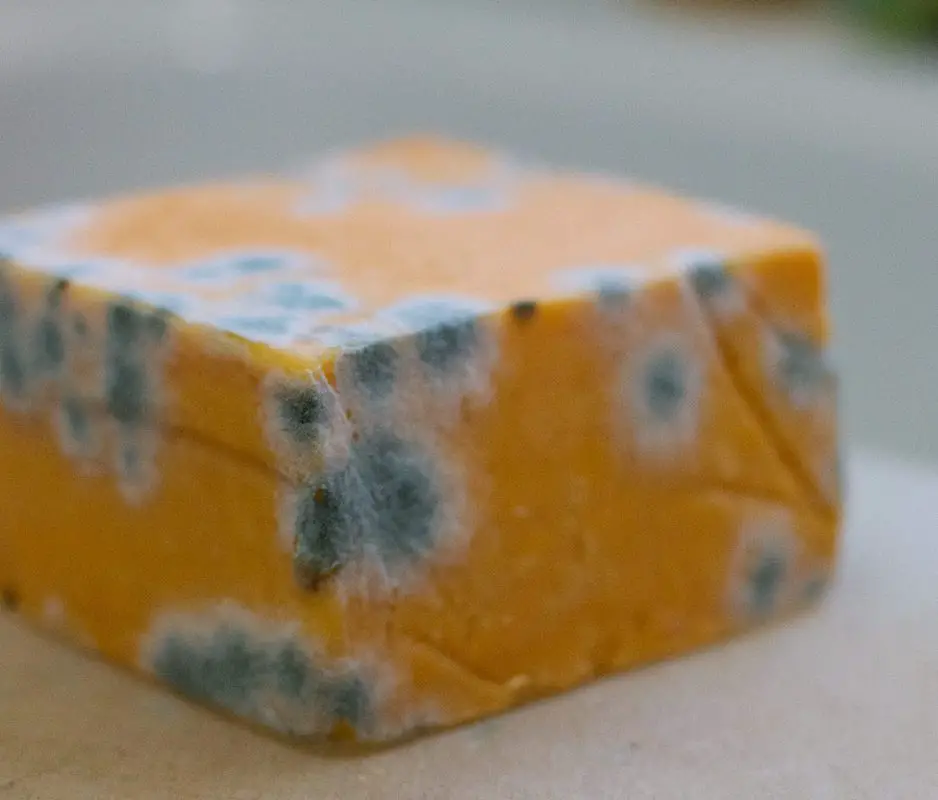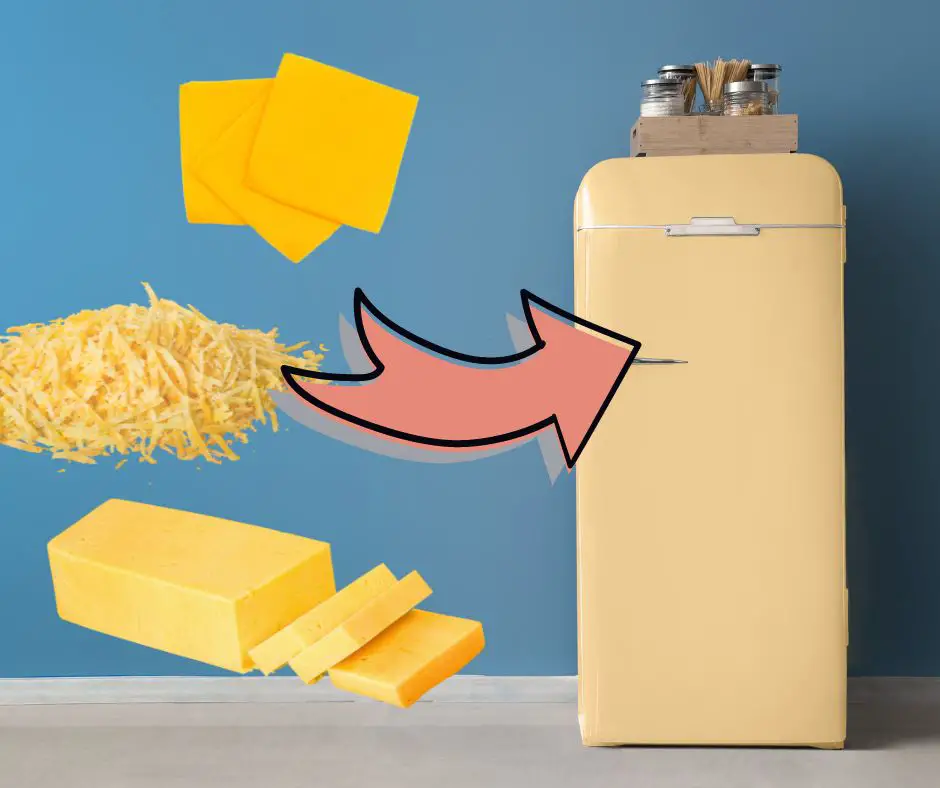Last Updated on December 20, 2022 by Aaron
Do you love cheddar cheese? You might be wondering how long it can safely be left out of the refrigerator without spoiling. It’s important to know that cheddar cheese, like other cheeses and dairy products, is highly perishable and should not be left unrefrigerated for an extended period of time.
According to food safety experts, soft cheeses like brie and feta can typically remain safe for consumption for up to two hours if kept at room temperature (about 70 degrees Fahrenheit). When it comes to hard cheeses like cheddar cheese and parmesan, they can be left unrefrigerated for a bit longer.
Table of Contents
How long can cheddar cheese be left out unrefrigerated?
There is no definitive answer to how long cheddar cheese can be left out unrefrigerated, as the time will vary greatly depending on the cheese and environmental conditions. Generally speaking, cheddar cheese in curd form can be stored in the fridge and has a 3 days shelf life in general [1]. If unrefrigerated, it should be consumed within 24 hours.
Most unopened cheddar cheese in a block or shredded form, if properly stored in the fridge, can last for about 4 to 6 months. If the package is opened and fridged, it should be used within 6 weeks or less, but will only last around 4 to 8 hours when left out of the refrigerator.
Similar to parmesan gone bad, which we’ve discussed here, most cheese experts do not recommend leaving cheddar cheese to sit out for more than eight hours for safety reasons, while the cheese manufacturers like Golden Age Cheese suggest that cheddar does not need to be refrigerated as preserved cheddar cheese is dry and does not go stale. Furthermore, refrigeration will alter the flavor and texture of the cheese.
But in order to store cheddar unrefrigerated, you’ll need to do the following: wipe the surface with white vinegar and make sure it’s merely damp not wet; wrap the cheese in cheesecloth; lay it in 2 layers of waxed paper, butcher’s paper or parchment paper. Then taped it. Read full here. This works best for sharp cheddar, but not so much for younger mild cheddar.
Also, you will need to keep the cheese in a cool, dry place. It’s also important to keep the cheddar cheese away from direct sunlight or any other source of heat.
It depends on several factors
The rate of spoilage depends largely on the environment, including temperature, humidity, hygiene, states of the cheese, and storage conditions. Some drier and crumbly cheddar cheese can stay unrefrigerated for longer periods, but younger, softer cheddar cheese will spoil much faster.
The legal limit for cheddar cheese in the United States is to have a maximum of 38% moisture. The aged cheddar is usually 30-35%, which is pretty low compared to cheese like mozzarella about 45-52%; 41% for swiss cheese; 50-60% in brie cheese; and 45% in provolone.
Do not confuse natural cheddar with processed cheddar sliced. Natural cheddar will spoil faster most of the time, while processed cheddar sliced may last longer. Although processed have a higher moisture content, they also contain preservatives like natamycin (mold inhibitor) and a large amount of salt to help them last longer.
For example, the pre-shredded medium Tillamook contains natamycin. When thinking about it, spoilage is part of nature and isn’t that bad after all!
The Signs of Cheddar Cheese Gone Bad
The signs of cheddar cheese gone bad are very easy to spot. Cheddar is a hard cheese, so if you see any form of mold growth on the surface, that’s a bad sign. The cheese may also have a sour or unpleasant smell; change in texture, from smooth firm to soft rubbery; darken color, or discoloration and so on.
Eating spoiled cheddar cheese may cause food poisoning or worse, so It’s always important to check your cheddar cheese before consuming it. Some naturally aged cheddars, i.e. the cave-aged or clothbound cheddar, will have mold grooves on the rind, but they shouldn’t smell bad. See images below.


Ermm, It (the left image) may look less appealing to you, it’s okay to brush them off but these are actually harmless! Some people actually enjoy the flavored rind of cheddar. It’s not the same as the bread mold that you should stay away from.
The image on the right is the regular cheddar that has gone bad, the difference is pretty clear huh? That cheddar is beyond salvageable. If the affected area is small, you can still trim it and enjoy the rest.
Store Extra Cheddar Cheese After Opening
If you have extra cheddar cheese after opening, here are some ways to store it: For the cheddar block, wrap it in parchment or waxed or cheese paper and place it in an airtight container. You can add a layer of aluminium foil as well. For better texture, try to rub a little olive or vegetable oil onto the cheese’s surface. It’ll preserve the cheese better against contamination and also prevent drying out, thus lasting longer. Also, keep them in the cheese drawer to isolate them from other food.
For shredded cheddar, you can simply keep it in its original pack, but make sure it is properly sealed. But if you’ve already opened the pack, then store it in an airtight container and wrap them with aluminium foil or cling wrap. Just like shredded cheese packs at supermarkets, they should last longer this way.

